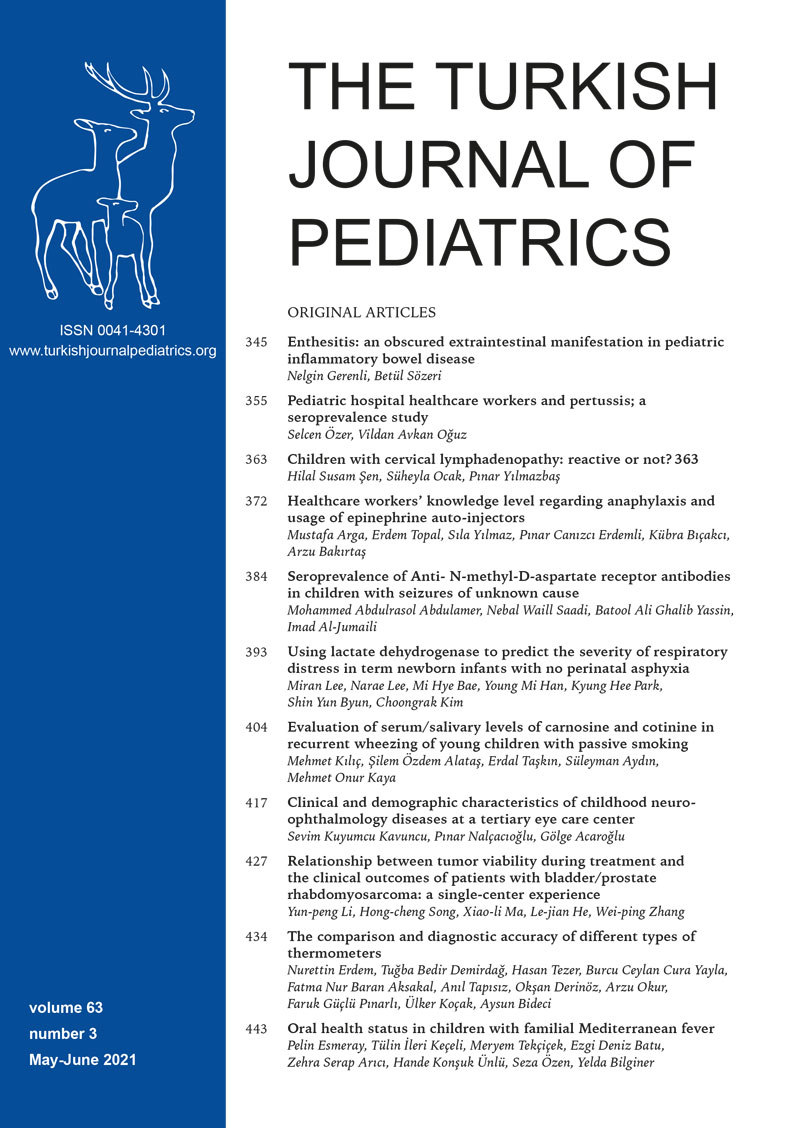Abstract
Background. Recurrent wheezing is common in young children, with a cumulative prevalence of up to 40 % in the first 6 years of life. In this study, we aimed to evaluate the relationship between the number of wheezing episodes and the number of cigarettes smoked at home and serum / saliva cotinine and carnosine levels in children with recurrent wheezing.
Methods. This study was conducted with 80 young children with recurrent wheezing, aged between 1-4 years and 50 healthy control groups. Patient population was divided into three groups depending on the number of their exposure to cigarette smoke and wheezing attacks. Serum cotinine, saliva cotinine, serum carnosine, saliva carnosine, vitamin D levels were measured by using the ELISA method.
Results. A significant relationship for serum cotinine and saliva cotinine levels was found between groups (p < 0.05). It was determined that as the number of exposure to cigarette smoke and number of wheezing episodes in young children with recurrent wheezing increased, the level of serum/saliva cotinine levels increased significantly, compared to the control group. In contrast, it was determined that as the number of exposure to cigarette smoke and number of wheezing episodes in young children with recurrent wheezing increased, serum/saliva carnosine levels decreased significantly, compared to the control group. In addition, a significant difference in serum vitamin D levels was found between healthy young children and young children with recurrent wheezing (p < 0.05).
Conclusions. We think that the measurement of salivary cotinine is a useful and noninvasive marker to evaluate passive smoking exposure in the etiology of recurrent wheezing in young children.
Keywords: carnosine, cotinine, exposure smoke, recurrent wheezing, saliva, serum, vitamin D
Copyright and license
Copyright © 2021 The Author(s). This is an open access article distributed under the Creative Commons Attribution License (CC BY), which permits unrestricted use, distribution, and reproduction in any medium or format, provided the original work is properly cited.













